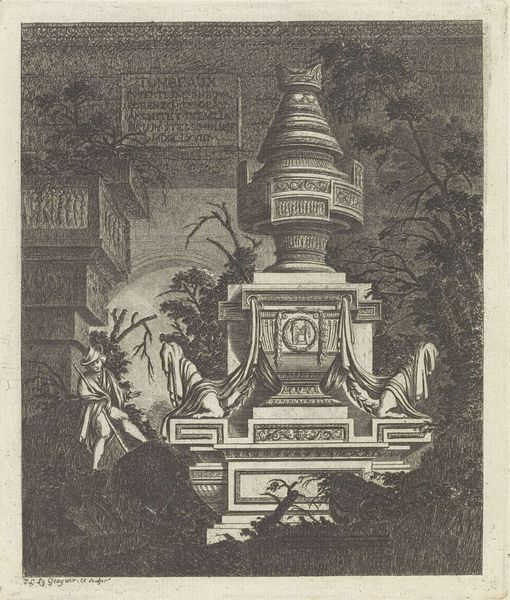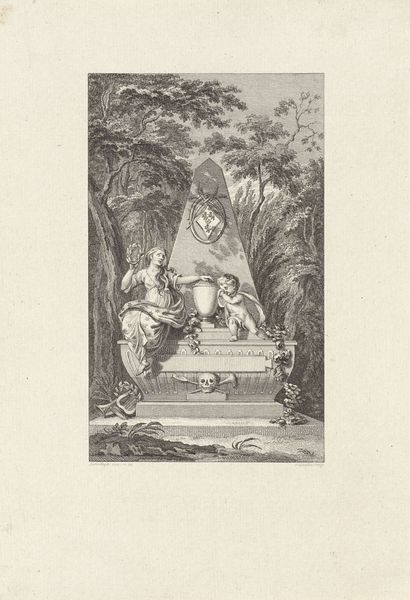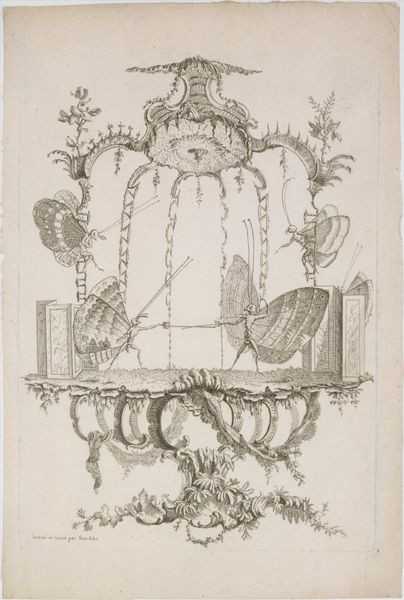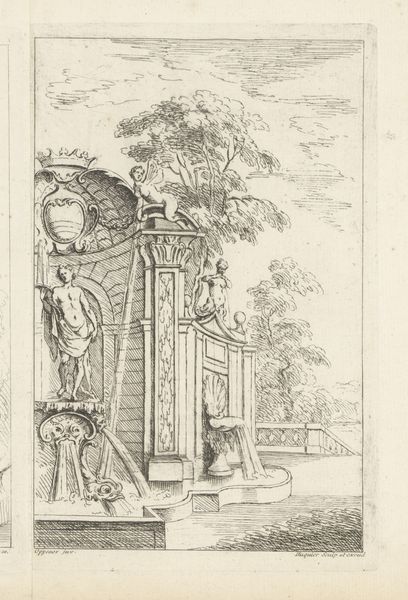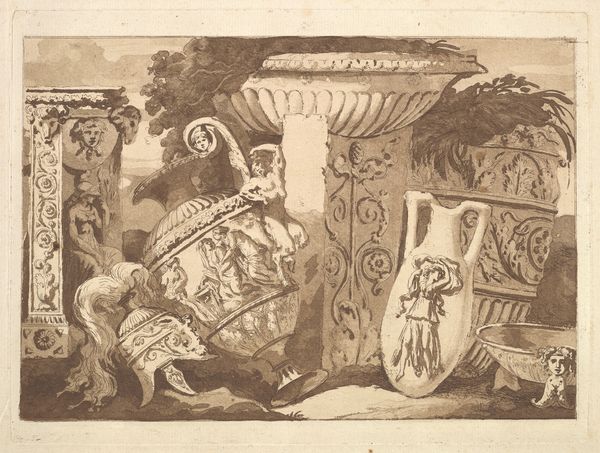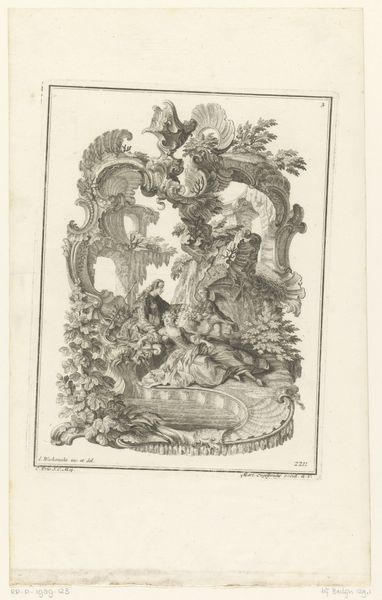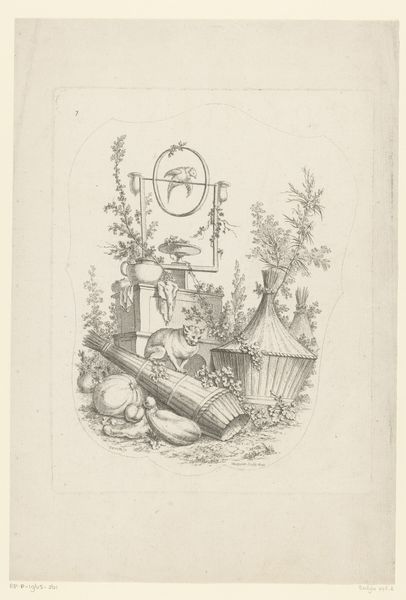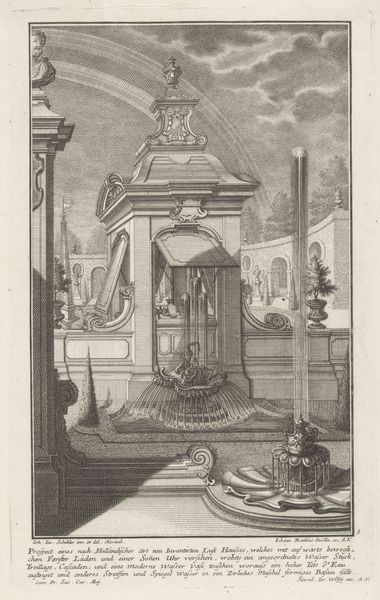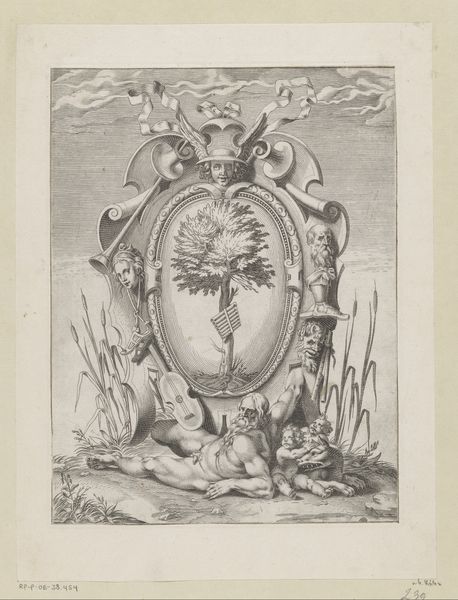
print, engraving
#
neoclacissism
#
allegory
# print
#
momento-mori
#
history-painting
#
engraving
Dimensions: height 151 mm, width 151 mm
Copyright: Rijks Museum: Open Domain
This allegorical print memorializing Prince Frederick was made anonymously in 1799 using etching, a printmaking technique that uses acid to create lines on a metal plate. The linear quality of the print—the fineness of the lines, and their ability to describe textures from stone to foliage—is entirely dependent on the etcher's skill, and the processes used. The etcher would have covered a metal plate with a waxy, acid-resistant coating, then scratched an image into that coating. The plate was then immersed in acid, which bit into the exposed metal, creating recessed lines. Ink was then applied to the plate, filling only the etched lines, and the surface wiped clean. Finally, paper was pressed against the plate, transferring the ink and creating the print. While this was a reproductive medium – an accessible way of sharing imagery – it was also a highly specialized craft. Understanding the skill involved, and the modes of production, brings us closer to understanding the print’s cultural significance at the time.
Comments
No comments
Be the first to comment and join the conversation on the ultimate creative platform.
